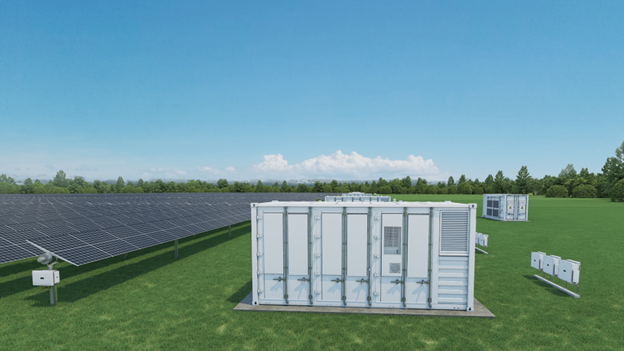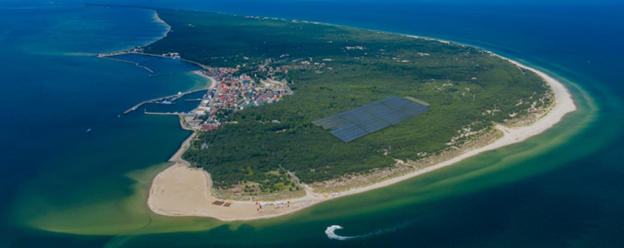Grid Energy Storage Applications: Paving the Way for a Sustainable Energy Future
In an era where sustainable energy is not just a choice but a necessity, the concept of grid energy storage (GES) has emerged as a cornerstone in modern energy systems. This innovative technology is revolutionizing the way we store and manage energy, making our grids smarter, more efficient, and increasingly reliant on renewable sources.
Innovative Applications
Grid energy storage refers to the methods used to store electricity within the electrical power grid. At its core, GES is a key enabler in balancing energy supply and demand, smoothing out the intermittency of renewable sources like solar and wind. Recent innovations in this field, such as advanced lithium-ion batteries and flow batteries, have not only enhanced the efficiency of energy storage but have also made it more cost-effective and scalable. These advancements are crucial in transitioning to a grid system that is less reliant on fossil fuels and more on sustainable sources.

Emerging Applications in Smart Grids
The advent of smart grids, which use digital technology to monitor and manage the flow of electricity, has further elevated the importance of GES. In these intelligent systems, GES plays a pivotal role in ensuring a consistent energy supply, despite the variable nature of renewable energy sources. By effectively storing excess energy generated during peak production times, GES helps in releasing this energy during high-demand periods, thus maintaining the balance and reliability of the grid.
Energy Storage in Microgrids
A microgrid is a small-scale power grid that can operate independently or in conjunction with the area's main electrical grid. The integration of GES in microgrids is particularly impactful. It provides a buffer against power outages and instability, especially in areas where energy demand exceeds the supply. In regions that rely on intermittent renewable sources, GES is essential for maintaining a steady energy supply, thus making microgrids more resilient and efficient.
Role in Electric Vehicle Charging Infrastructure
The surge in electric vehicle (EV) usage presents both a challenge and an opportunity for grid energy storage. EVs require a significant amount of electricity for charging, which can strain the grid during peak times. GES systems can alleviate this strain by storing energy during off-peak hours and supplying it during high demand periods. This not only stabilizes the grid but also ensures that EVs can be charged using renewable energy, further reducing the carbon footprint of transportation.
Use in Off-grid and Remote Areas
In remote or off-grid locations, where access to a central power grid is either limited or non-existent, GES offers a lifeline. By storing energy generated from sources like solar panels and wind turbines, these storage systems can provide a continuous power supply to these areas. This is not only crucial for basic electricity needs but also for enabling technological and economic development in remote communities.

Future Innovative Use Cases
Looking ahead, the possibilities of grid energy storage are boundless. Emerging technologies like solid-state batteries and hydrogen storage promise even greater efficiency and capacity. The future may see GES integrated with smart home systems, allowing for more personalized energy management. Moreover, as cities become more interconnected, GES could play a pivotal role in creating smart urban ecosystems where energy is shared and optimized across various sectors.
The impact of these innovations extends beyond just energy efficiency. By enabling a more robust and sustainable energy grid, GES plays a critical role in reducing greenhouse gas emissions and combating climate change. Economically, the expansion of GES technologies creates new markets and job opportunities, driving growth in the green economy.
Conclusion
In conclusion, grid energy storage is not just a technological advancement; it's a pathway to a more sustainable and resilient energy future. As we continue to innovate and implement these systems, we step closer to a world where energy is not just consumed but managed wisely, sustainably, and equitably. The journey towards this future is ongoing, and grid energy storage is at its forefront, lighting the way for generations to come.



![PAU - [ Altern@tives-P@loises ] PAU - [ Altern@tives-P@loises ]](http://website-google-hk.oss-cn-hongkong.aliyuncs.com/drawing/179/2022-3-2/21584.jpeg)

![Good deal: 15% bonus credit on App Store cards of €25 and more [completed] 🆕 | iGeneration Good deal: 15% bonus credit on App Store cards of €25 and more [completed] 🆕 | iGeneration](http://website-google-hk.oss-cn-hongkong.aliyuncs.com/drawing/179/2022-3-2/21870.jpeg)





Related Articles